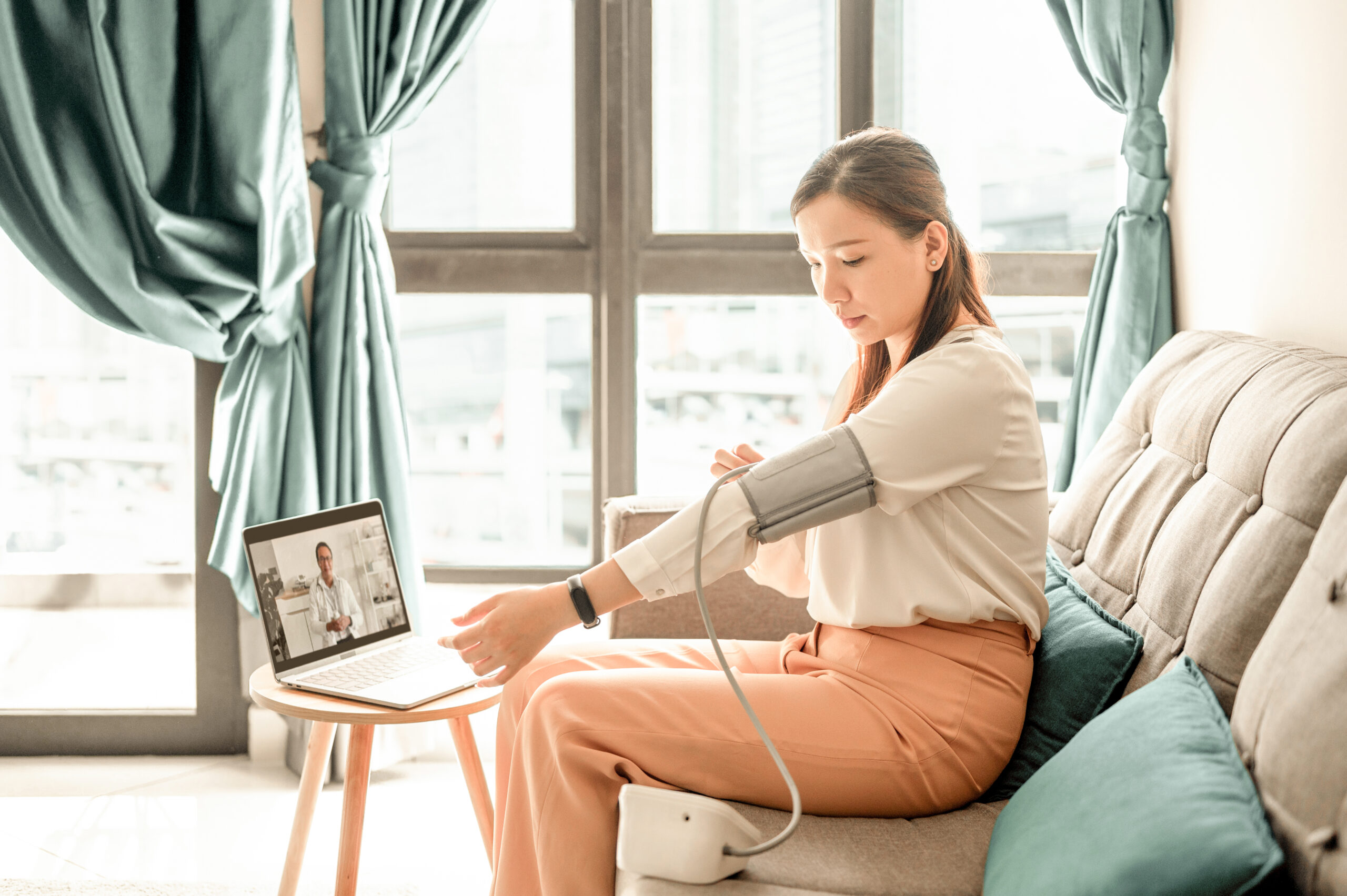Getting to the heart of postural orthostatic tachycardia syndrome (POTS)
Produced by:


Postural Orthostatic Tachycardia Syndrome, or POTS, is a condition that affects how your body regulates blood flow when you change positions, especially when you stand up.1 With POTS, when you stand, your heart rate quickly increases, which can cause a range of symptoms. These symptoms can be quite challenging and can significantly impact your daily life.
It is estimated that about one to three million Americans are living with POTS. This condition can affect anyone, but it is more common in women. 3
What is postural orthostatic tachycardia syndrome?
POTS is a type of cardiac condition that affects the autonomic nervous system, which controls automatic functions like heart rate and blood pressure.1 When someone with POTS stands up, their heart rate can increase by 30 beats per minute or more.2 In addition to a rapid increase in heart rate other symptoms may include: 4
- Lightheadedness: Feeling dizzy or like you might faint.
- Palpitations: Feeling your heart beat very rapidly or irregularly.
- Chronic fatigue: Feeling very tired all the time.
- Nausea: Feeling sick to your stomach.
- Dizziness: Feeling unsteady or off-balance.
- Headaches: Frequent or severe headaches.
- Sleep disturbances: Trouble falling asleep or staying asleep.
Other conditions including a heart attack also can cause these symptoms so it’s important to get a proper diagnosis. In some cases, these symptoms may require emergency evaluation.
Diagnosis and management
To evaluate for POTS, a health care provider will begin by performing a physical exam and ask you questions about your symptoms, medications and medical history. A tilt table test, which measures heart rate and blood pressure as a patient is raised from a flat to almost upright position, can be used to diagnose POTS. Other tests may be performed to identify specific characteristics of POTS.5
Proper diagnosis and management of POTS are crucial because the symptoms can be severe and significantly impact your daily life. Health care professionals, particularly cardiologists, play a vital role in diagnosing and managing POTS. They can:
- Conduct tests: To determine if you have POTS and to rule out other conditions.
- Provide diagnoses: To confirm whether you have POTS and to understand the severity of your condition.
Offer treatment options: To help manage your symptoms and improve your quality of life.
Treating postural orthostatic tachycardia syndrome
Treating POTS can involve a combination of pharmacological and non-pharmacological approaches. Non-pharmacological treatment is preferred unless a patient has severe symptoms or difficulty starting an exercise program. 6
Non-pharmacological treatments may include:6
- Increasing fluid intake: Drinking more water can help maintain your blood volume and reduce symptoms.
- Dietary changes: Adding extra salt to your diet can help your body retain more fluid.
- Wearing compression garments: These can help improve blood flow and reduce symptoms.
- Isometric exercises that involve contracting your muscles without moving your body which can put pressure on your muscles, pushing blood back toward the heart. Your provider may recommend doing isometric exercises before getting out of bed.
- A slow increase in exercise starting with activities that can be done seated, reclined or horizontal, such as swimming, recumbent bicycling or rowing.*
- Walking daily starting slowly and adding more steps to your daily total every week or every couple of weeks.
- Elevation of the head of your bed to help maintain some pressure in the blood vessels in your legs while you sleep. Moving and changing position slowly when getting out of bed, can help allow your body to adjust to the change in position.
Pharmacological treatments may include:6,7
- Medications to retain salt and water: These can help your body hold onto more salt and water, which can improve blood volume and reduce symptoms.
- Medications to increase blood pressure: These can help stabilize your blood pressure and reduce the rapid heart rate.
- Medications to manage heart rate: These can help control your heart rate and reduce the frequency of symptoms.
With the right diagnosis and management, individuals with POTS can lead more comfortable and fulfilling lives. If you suspect you have POTS or are experiencing symptoms, don’t hesitate to reach out to an Optum specialist for help. Our team of experts is here to provide you with the care and support you need to manage your symptoms and improve your quality of life.
*Disclaimer
The information featured in this site is general in nature. The site provides health information designed to complement your personal health management. It does not provide medical advice or health services and is not meant to replace professional advice or imply coverage of specific clinical services or products. The inclusion of links to other web sites does not imply any endorsement of the material on such websites. Consult your doctor prior to beginning an exercise program or making changes to your lifestyle or health care routine.
1. Nemours KidsHealth, Postural Orthostatic Tachycardia Syndrome (POTS). Reviewed 2022.
2. National Institute of Neurological Disorders and Stroke, Postural Tachycardia Syndrome (POTS).
3. Cleveland Clinic, Postural Tachycardia Syndrome (POTS). Reviewed September 9, 2022.
4. National Institute of Neurological Disorders and Stroke, Postural Tachycardia Syndrome (POTS).
5. Cleveland Clinic, Postural Tachycardia Syndrome (POTS). Reviewed September 9, 2022.
6. Cleveland Clinic, Postural Tachycardia Syndrome (POTS). Reviewed September 9, 2022.
7. Cleveland Clinic, Postural Tachycardia Syndrome (POTS). Reviewed September 9, 2022.
Sinus infection remedies: 9 natural ways to relieve symptoms and speed recovery
Learn how to get relief from sinus pressure and when it might be time to see a doctor.
Read articleUnderstanding Achilles rupture: Causes, symptoms and treatment
Your Achilles tendon is the strongest tendon in your body, connecting your calf muscle to your heel bone and enabling you to walk, run, and jump. Despite its strength, it’s also one of the most commonly injured tendons—especially during activities that involve sudden stops, pivots, or awkward landings.
Read articleHealthy habits to help stop bladder leaks
Learn how to regain control of your bladder and avoid accidents.
Read article